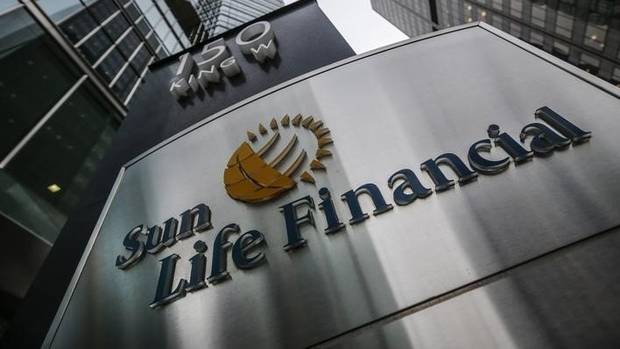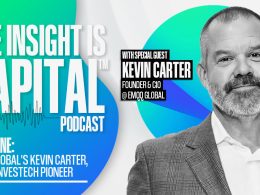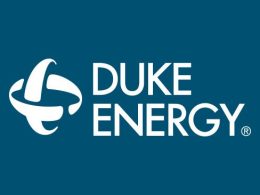by Blackrock
Covered call strategies in a closed-end fund may help long-term investors manage short-term volatility.
Successful investing is not just about reaching the final destination; the journey itself can be equally important. Equity investors in particular need to account for the likelihood of volatility along the way and seek strategies for limiting loss while staying in the market.
The impact of steep losses on long-term returns can be significant, as the chart below shows. Investors may want to consider lower volatility strategies, such as those used by equity covered call closed-end funds (“CEFs”), which can help to manage portfolio risk and potentially produce a better risk-adjusted outcome.
What are covered calls?
Insurance markets allow purchasers to protect against uncertain events and risks. For instance, automobile insurance protects car owners in the unfortunate event of an accident in exchange for a premium. Option markets work in a similar fashion. (An option is a contract that gives an investor the right, but not the obligation, to buy a security at a later date at an agreed-upon price.)
Investors who want to protect their portfolios from volatility or other uncertain outcomes can sell, or “write,” options on their current stock holdings. The seller receives an upfront “option premium” these premiums generate cash flows, which can help to offset some of the downside risk of owning the underlying stock. In exchange, the option writer (or seller) is obligated to sell the underlying equity security at the call’s strike price if the buyer chooses to exercise the option. As a result, upside participation potential is limited by the strike price plus the initial premium. By using an equity covered call strategy, investors may reduce portfolio volatility by capturing option premiums, potentially enhancing risk-adjusted returns.
The role of active management
Combining active security selection with an active option overwrite strategy may produce better outcomes for equity-income investors, specifically in the CEF structure. BlackRock equity covered call CEFs employ a strategy that includes a focus on single stock options while varying the amount of overwriting (selling) on the portfolio (typically between 30-60%) as well as diversifying both the moneyness * and time to maturity of the options. As indicated in Exhibit 2, this approach has produced lower downside capture ratios than the underlying index for each fund. In addition, the funds have achieved higher upside capture ratios than their downside capture ratios since their respective inceptions. This asymmetric capture ratio means that, on average, the funds have achieved greater participation in rising markets with comparably lower participation in declining markets. As a result, the funds have generally been able to produce superior risk-adjusted returns as shown by their Sharpe Ratio when compared to the underlying equity benchmark (see Exhibit 3).
* Moneyness: relative position of the current price of a stock with respect to the option’s strike price.
Exhibit 2
Who can potentially benefit from equity covered call strategies?
CEFs that employ an equity covered call strategy may benefit equity income investors seeking the following qualities.
- Potential for higher distribution rates relative to a long-only equity portfolio. Distribution rates for equity covered call CEFs are typically higher than rates of long-only equity funds. The average distribution rate for equity covered call CEFs is 8.15%, compared to the average distribution rate for equity income mutual funds which is 2.14%
- Potential for higher risk-adjusted returns as compared to a long-only equity portfolio. Over a market cycle, equity covered call strategies have generally exhibited the ability to reduce portfolio volatility without sacrificing performance as compared to a long-only benchmark as seen in the Sharpe Ratio exhibit 3.
Exhibit 3
In the face of increasingly volatile markets, investors should consider providing cover for their portfolio by using covered call strategies.
Learn more about CEFs.
**equity covered call CEFs are represented by the Lipper Option Strategies/Option Arbitrage Funds category and equity income mutual funds are represented by the Lipper Equity Income Funds category.
Benchmarks:
Benchmark: BCX (S&P Global Natural Resources TR USD), BDJ (Russell 1000 Value TR USD), BOE (MSCI ACWI TR USD), BGR (MSCI World/Energy GR USD), BGY (MSCI ACWI Ex-USA NR USD), BME (Russell 3000/Health Care TR USD), BST (MSCI World All Country Information Technology NR USD) BUI (60% S&P Global Infrastructure TR USD, 40% S&P 1500 Utilities TR) and CII (S&P 500).
Index Definitions: S&P Global Natural Resources TR USD: The index includes 90 of the largest publicly-traded companies in natural resources and commodities businesses that meet specific investability requirements, offering investors diversified and investable equity exposure across 3 primary commodity-related sectors: agribusiness, energy, and metals & mining. Russell 1000 Value TR USD: An index of approximately 1,000 of the largest value companies in the U.S. equity markets.MSCI ACWI TR USD: The MSCI ACWI captures large and mid cap representation across 23 Developed Markets and 24 Emerging Markets countries. With 2,491 constituents, the index covers approximately 85% of the global investable equity opportunity set. MSCI World/Energy GR USD: The MSCI World Energy Index is designed to capture the large and mid cap segments across 23 Developed Markets countries. All securities in the index are classified in the Energy sector as per the Global Industry Classification Standard (GICS®). MSCI ACWI Ex-USA NR USD: The MSCI ACWI ex USA Index captures large and mid cap representation across 22 of 23 Developed Markets (DM) countries (excluding the US) and 24 Emerging Markets (EM) countries*. With 1,859 constituents, the index covers approximately 85% of the global equity opportunity set outside the US. Russell 3000/Health Care TR USD: The Russell 3000 Health Care Index is an unmanaged index representative of companies involved in medical services or health care in the Russell 3000 Index, which is comprised of the 3,000 largest U.S. companies as determined by total market capitalization. MSCI World All Country Information Technology NR USD: The Index is designed to capture the large and mid cap segments across 23 Developed Markets countries. All securities in the index are classified in the Information Technology sector as per the Global Industry Classification Standard (GICS®)S&P Global Infrastructure TR USD: S&P Global Infrastructure Index is designed to track 75 companies from around the world chosen to represent the listed infrastructure industry while maintaining liquidity and tradability. To create diversified exposure, the index includes three distinct infrastructure clusters: energy, transportation, and utilities. S&P 1500 Utilities TR USD: S&P Composite 1500® Utilities Index comprises those companies included in the S&P Composite 1500 that are classified as members of the GICS® utilities sector.
Carefully consider the Funds’ investment objectives, risk factors, and charges and expenses before investing. This and other information can be found in the Funds’ prospectuses and shareholder reports which may be obtained by visiting the SEC Edgar database. Read the prospectus carefully before investing.
Common shares of the closed-end funds identified above are only available to the public for purchase and sale at current market price on a stock exchange. A closed-end fund’s investment return, dividend yield, market price and NAV will fluctuate with market conditions. The information for these funds is provided for informational purposes only and does not constitute a solicitation of an offer to buy or sell Fund shares.
Performance results reflect past performance and are no guarantee of future results. Current performance may be lower or higher than the performance data quoted. All returns assume reinvestment of all dividends. The market value and net asset value (NAV) of a fund’s shares will fluctuate with market conditions. At the time of sale, your shares may have a market price that is above or below net asset value, and may be worth more or less than your original investment. Closed-end funds may trade at a premium to NAV but often trade at a discount.
The funds are actively managed and their characteristics will vary. The values of the securities owned by the funds fluctuate in price so the value of your investment can go down depending on market conditions. International investing involves special risks including, but not limited to political risks, currency fluctuations, illiquidity and volatility. These risks may be heightened for investments in emerging markets. Investments in emerging markets may be considered speculative and are more likely to experience hyperinflation and currency devaluations, which adversely affect returns. In addition, many emerging securities markets have lower trading volumes and less liquidity. The funds may use derivatives to hedge their investments or to seek to enhance returns. Derivatives entail risks relating to liquidity, leverage and credit that may reduce returns and increase volatility.
There is no assurance that any fund will achieve its investment objective. Each Fund is subject to numerous risks, including investment risks. None of the funds is a complete investment program and you may lose money investing in a fund. An investment in a fund may not be appropriate for all investors.
Closed-end fund shares are not deposits or obligations of, or guaranteed by, any bank and are not insured by the FDIC or any other agency. Investing involves risk, including possible loss of principal amount invested. This is not a prospectus intended for use in the purchase or sale of any fund’s shares. Shares may only be purchased or sold through registered broker/dealers. For more information regarding any of BlackRock’s closed-end funds, please call BlackRock at 800-882-0052.
Risks Associated with Options on Securities. There are several risks associated with transactions in options on securities. For example, there are significant differences between the securities and options markets that could result in an imperfect correlation between these markets, causing a given transaction not to achieve its objectives. A decision as to whether, when and how to use options involves the exercise of skill and judgment, and even a well-conceived transaction may be unsuccessful to some degree because of market behavior or unexpected events. As the writer of a covered call option, a fund forgoes, during the option’s life, the opportunity to profit from increases in the market value of the security covering the call option above the sum of the premium and the strike price of the call, but has retained the risk of loss should the price of the underlying security decline. In other words, as a fund writes covered calls over more of its portfolio, the fund’s ability to benefit from capital appreciation becomes more limited. The writer of an option has no control over the time when it may be required to fulfill its obligation as a writer of the option. Once an option writer has received an exercise notice, it cannot effect a closing purchase transaction in order to terminate its obligation under the option and must deliver the underlying security at the exercise price. If a fund writes call options on indices or baskets of securities that include securities that are not in the fund’s portfolio or that are not in the same proportion as securities in the fund’s portfolio, the fund will experience loss, which theoretically could be unlimited, if the value of the index or basket appreciates above the exercise price of the option written by the fund. As such, an option over-write strategy may outperform the general equity market in flat or falling bear markets but under-perform in rising bull markets. Writing covered call options entails certain additional risks, which include, but are not limited to, the following: an increase in the value of the underlying equity security above the exercise price can result in the exercise of a written option (sale by the fund to a counterparty) when the fund may not otherwise have sold the security; exercise of the option by the counterparty will result in a sale below the current market value and will result in a gain or loss being realized by the fund.
Tax Considerations of Equity Covered Call Funds. Many covered call funds have a level or managed distribution plan with goal of providing shareholders with consistent cash flows by setting distribution rates based on expected long-term returns of the fund. In the event that a covered call fund does not have sufficient earnings to support its distributions, all or a portion of its distribution will be a return of a portion of an investor’s original investment, characterized as a “return of capital,” which should not be confused with yield or income. The final tax characterization of distributions is determined after the fiscal year and is reported to shareholders on Form 1099. The tax rules applicable to covered call funds are complex. BlackRock does not provide tax advice, and investors should consult their professional advisors before making any tax or investment decision.
Some BlackRock closed-end funds may utilize leverage to seek to enhance the yield and net asset value of their common stock, through bank borrowings, issuance of short-term debt securities or shares of preferred stock, or a combination thereof. However, these objectives cannot be achieved in all interest rate environments. While leverage may result in a higher yield for the fund, the use of leverage involves risk, including the potential for higher volatility of the NAV, fluctuations of dividends and other distributions paid by the fund and the market price of the fund’s common stock, among others. There is no assurance that a fund’s leveraging strategy will be successful. While a common investment practice by many closed-end fund managers, leverage cannot assure a higher yield or return to the holders of the common shares.
Some BlackRock closed-end funds make distributions of ordinary income and capital gains only at calendar year end, or make additional distributions of ordinary income and capital gains at calendar year end in order to maintain their qualification for pass through tax treatment as a “regulated investment company” under the Internal Revenue Code. Those distributions temporarily cause extraordinarily high yields. There is no assurance that a fund will repeat that yield in the future. To the extent a BlackRock closed-end fund makes subsequent regular monthly distributions of ordinary income and/or capital gains, such distributions will likely be lower than such calendar year end distributions. Fund details, holdings and characteristics are as of the date noted and subject to change.
The opinions expressed are those of BlackRock as of August 31, 2019, and are subject to change at any time due to changes in market or economic conditions. BlackRock makes no undertaking to change this document in response to such changes. These comments should not be construed as a recommendation of any individual holdings or market sectors.
This material is provided for informational purposes only and does not constitute a solicitation in any jurisdiction in which such solicitation is unlawful or to any person to whom it is unlawful. Moreover, it neither constitutes an offer to enter into an investment agreement with the recipient of this document nor an invitation to respond to it by making an offer to enter into an investment agreement. This material is not intended to be relied upon as a forecast, research or investment advice, and is not a recommendation, offer or solicitation to buy or sell any securities or to adopt any investment strategy. The information and opinions contained in this material are derived from proprietary and non-proprietary sources deemed by BlackRock to be reliable, are not necessarily all-inclusive and are not guaranteed as to accuracy. There is no guarantee that any forecasts made will come to pass. Any investments named within this material may not necessarily be held in any accounts managed by BlackRock. Reliance upon information in this material is at the sole discretion of the reader.
©2019 BlackRock, Inc. All Rights Reserved. BLACKROCK, BLACKROCK SOLUTIONS and iSHARES are registered and unregistered trademarks of BlackRock, Inc., or its subsidiaries in the United States and elsewhere. All other trademarks are those of their respective owners.
Prepared by BlackRock Investments, LLC, member FINRA.
Not FDIC Insured • May Lose Value • No Bank Guarantee
WAH1019U-957798-1/1
This post was first published at the official blog of Blackrock.


















